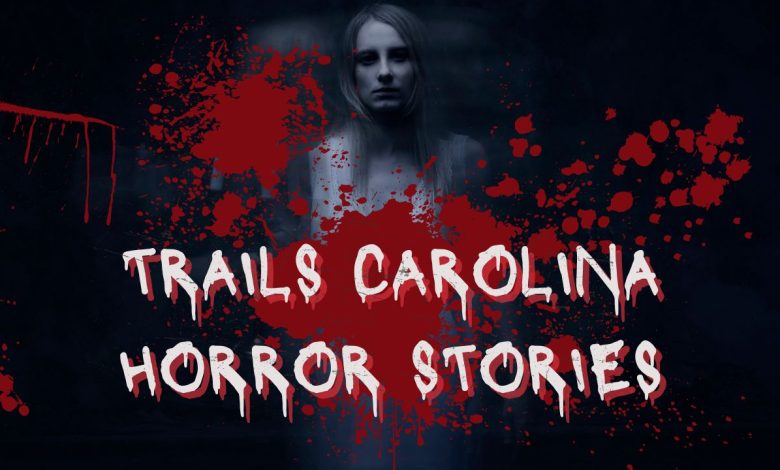The concept of wilderness therapy, a fusion of outdoor adventure and therapeutic intervention, has been a beacon of hope for many families seeking solutions for troubled adolescents. trails carolina horror stories, nestled in the heart of the beautiful Appalachian landscape, is one such program that has garnered attention. However, alongside its successes, a series of concerning narratives – often referred to as “Trails Carolina Horror Stories” – have surfaced, shedding light on the potential dark sides of such interventions.
Table of Contents
This blog post delves deep into these narratives, aiming to provide a comprehensive and unbiased exploration of trails carolina horror stories. We will examine what the program entails, the nature of the horror stories associated with it, and the broader implications for the field of wilderness therapy. Our goal is to present a well-rounded perspective that aids families in making informed decisions about such therapeutic interventions.
What is trails carolina horror stories?
Trails carolina horror stories is a wilderness therapy program designed for adolescents and young adults struggling with emotional, behavioral, and academic challenges. Located in the scenic mountains of North Carolina, the program combines outdoor living with therapeutic interventions to foster personal growth and behavioral change.
Program Methodology
- Outdoor Activities: Participants engage in various outdoor activities like hiking, camping, and wilderness survival skills.
- Therapeutic Approach: Licensed therapists work with participants using individual and group therapy sessions.
- Educational Component: The program also includes an educational aspect, ensuring that participants continue their academic pursuits.
Intended Audience
Trails carolina horror stories caters to a diverse group of young individuals, typically ranging from teenagers to young adults, who are facing various challenges, including:
- Emotional and behavioral issues
- Learning differences
- Social struggles
The Emergence of Trails carolina horror stories
The term “Trails Carolina Horror Stories” has emerged predominantly from online forums and social media, where former participants and their families share their experiences. These stories range from mild dissatisfaction to serious allegations of mistreatment.
Types of Complaints
Common complaints include:
- Harsh Living Conditions: Some reports mention overly challenging physical conditions and tasks.
- Perceived Inadequate Support: Allegations of insufficient emotional and psychological support during the program.
- Concerns Over Staff Conduct: Instances of alleged unprofessional behavior by staff members.
Common Themes in Reported Horror Stories
The Trails carolina horror stories often share similar themes, which include:
- Mental and Physical Strain: Stories of intense emotional and physical challenges that were, according to the narratives, inadequately managed.
- Isolation and Lack of Communication: Reports of feeling isolated or being unable to communicate regularly with family members.
- Disputes Over Therapeutic Methods: Concerns about the effectiveness and appropriateness of the therapeutic techniques used.
Case Studies and Examples
- Anecdotal Accounts: Several online forums and review sites contain detailed accounts from former participants, though these are individual experiences and may not represent the program as a whole.
- Confidentiality and Privacy: It’s important to note that specific details and personal identifiers in these stories are often withheld to protect privacy.
Perspectives on Wilderness Therapy
Wilderness therapy is a form of mental health treatment that combines outdoor activities with therapeutic counseling. Its proponents believe that the challenges of living in nature can lead to personal growth and better coping strategies.
The Debate Around Wilderness Therapy
- Supporters’ View: Advocates argue that wilderness therapy offers a unique and effective approach to treatment, particularly for those who haven’t responded to traditional therapy.
- Critics’ Point of View: Critics, however, raise concerns about safety, the qualifications of staff, and the one-size-fits-all nature of some programs.
The Response from Trails Carolina
In response to the negative stories, Trails carolina horror stories has taken steps to address these concerns:
- Enhanced Safety Measures: Implementing stricter safety protocols and continuous staff training.
- Transparency with Parents: Increasing communication with parents about their child’s progress and experiences.
- Program Evaluation and Adjustment: Continuously reviewing and adjusting their program based on participant feedback and outcomes.
Commitment to Improvement
Trails carolina horror stories expresses a commitment to providing a safe, supportive, and effective therapeutic environment, actively seeking to improve and adapt their methods.
Legal and Ethical Considerations
Wilderness therapy programs, including Trails carolina horror stories, operate under specific legal and ethical standards:
- Licensing and Accreditation: Compliance with state regulations and accreditation from relevant bodies.
- Staff Qualifications: Ensuring that staff are adequately trained and qualified for their roles 36DTFN.
Ethical Practices
- Participant Welfare: The primary concern is the safety and well-being of participants.
- Informed Consent: Ensuring that participants and their guardians fully understand the nature of the program.
Alternative Views and Success Stories
While there are horror stories, there are also accounts of positive experiences and successful outcomes from Trails carolina horror stories alumni:
- Success in Overcoming Challenges: Testimonies from former participants who found the program life-changing.
- Parental Feedback: Positive reviews from parents who noticed significant improvements in their child’s behavior and well-being.
Advice for Parents and Guardians
For parents considering a wilderness therapy program like Trails carolina horror stories, it’s crucial to:
- Conduct Thorough Research: Investigate the program’s reputation, success rate, and review feedback from past participants and their families.
- Understand the Therapeutic Approach: Familiarize yourself with the therapeutic methods used and ensure they align with your child’s needs.
- Verify Qualifications and Safety Protocols: Check the credentials of the staff and understand the safety measures in place.
Engaging with Your Child
- Open Communication: Have open discussions with your child about their feelings and expectations regarding the program.
- Post-Program Support: Plan for ongoing support and therapy after the program concludes to reinforce positive changes.
The Future of Wilderness Therapy
The field of wilderness therapy, including programs like Trails carolina horror stories, is evolving:
- Integration of Technology: Utilizing technology for enhanced safety and therapeutic outcomes.
- Personalized Therapies: Moving towards more individualized treatment plans based on each participant’s unique needs.
Potential Reforms
- Increased Oversight and Regulation: The industry may see heightened regulation to ensure higher standards of safety and efficacy.
- Evidence-Based Practices: A shift towards therapies and interventions backed by scientific research.
Conclusion
In summary, the discourse surrounding Trails carolina horror stories and its associated “horror stories” illuminates the complexities inherent in wilderness therapy programs. While there are certainly accounts of negative experiences, it is equally important to acknowledge the positive outcomes and transformations that many participants have reported. This dichotomy underscores the necessity for thorough research, informed decision-making, and ongoing dialogue when considering such therapeutic interventions for young people.
As the field of wilderness therapy progresses, it stands at the crossroads of continued innovation and increased scrutiny. The future likely holds more personalized approaches, greater integration of technology, and heightened regulatory oversight, all aimed at enhancing the safety, efficacy, and ethical standards of these programs. For families considering wilderness therapy as a viable option, the journey is one of cautious optimism. It involves balancing the potential benefits against the risks, understanding the unique needs of the individual, and choosing a program that aligns with the highest standards of care and professional practice.
FAQs
- Is wilderness therapy safe?
- Wilderness therapy can be safe when conducted by qualified professionals in a regulated environment, though risks should be carefully considered.
- How effective is wilderness therapy?
- Effectiveness can vary based on individual circumstances, but many report positive outcomes. It’s important to consider personal needs and choose a program accordingly.
- What should I do if I have concerns about a wilderness therapy program?
- Research thoroughly, ask for credentials, speak to past participants, and consult mental health professionals before making a decision.







